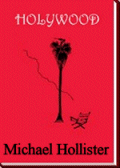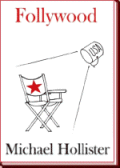Novelist & Critic
HOME PAGE
BIOGRAPHY
MODEL OF METAPHORS
DANEgerus
Patrick Garry, novelist
Apocalypse Now
The Best Years of Our Lives
The Big Chill
Billy Budd
The Bostonians
Casablanca
Citizen Kane
Close Encounters of the Third Kind
Coming Home
Daisy Miller
The Day of the Locust
Dr. Strangelove
Easy Rider
Fail-Safe
A Farewell to Arms
The Front
Gone with the Wind
Good Night, and Good Luck
The Graduate
The Grapes of Wrath
The Great Gatsby
Guilty by Suspicion
High Noon
Huckleberry Finn
Invasion of the Body Snatchers
Key Largo
The Majestic
Meet John Doe
Moby-Dick
The Old Man and the Sea
On the Waterfront
The Player
The Red Badge of Courage
Reds
The Scarlet Letter
The Shrike, based on Miss Lonelyhearts
2001: A Space Odyssey
The Sun Also Rises
Triumph of the Will
The Way We Were
Wise Blood
The Wizard of Oz
Woodstock
The World According to Garp
Peter Carafiol
Free Speech
Metaphor
archetype
Blacklist
Hollywood Novels
McCarthyism
Communist propaganda
The Best Years of Our Lives
That night in her hotel room, she turned on one of Willy's pictures, being run as a tribute. She and Ryan had seen The Best Years of Our Lives when it came out the year after World War II ended. When some Congressmen called it Communist propaganda during the House Committee hearings in Washington D.C., she and Ryan considered the accusation preposterous. They were fond of Willy and very grateful to him for acting as their financial angel when they needed help getting started as independents. They vigorously defended him. Willy was a war hero and a patriot. He almost went deaf while filming close beside heavy machine guns on bombing raids over Nazi Germany. Sarah had agreed with those who rated his movie one of the greatest ever made. Thereafter, the picture became an historical marker in other movies, usually referenced by a publicity poster in the background, an assertion that Willy's film all by itself refuted all reports alleging Communist influence in Hollywood.
Seeing it again so many years later, Sarah paid closer attention. She felt curious about how an original story by MacKinlay Kantor, whose popularity declined after the sixties because by then he was seen as too patriotic, could have been turned into a movie that some had called Communist propaganda. Three veterans return from the war to their small home town. A wounded sailor with hooks for hands was played by a real veteran, not an actor. His struggle to adjust to his injuries and the loving acceptance of him by his girlfriend easily won the hearts of audiences just after the war and made the movie so popular that it won seven Oscars including Best Picture. The fine acting, the wholesome emotional appeal and the photography by Gregg Toland made the movie irresistible to Sarah, just as it had been the first time she watched it, until about halfway along.
This time, one scene came as a revelation.
In the town pharmacy, the sailor with hooks for hands has an ugly altercation with a man who ridicules him for fighting in the war against fascism. This man thinks the country should be fighting a different enemy. Sarah had not thought about it before, but this time, as soon as she realized what enemy he meant, the political subtext of the movie popped out of it like cards held up by students in the bleachers at a football game. At the beginning of the Cold War, the only anti-Communist in this production is a right-wing fascist stereotype who sides with both Nazi and Japanese fascism and assaults a double amputee. We see that he is not Jewish when he orders ham in his sandwich. Sarah recognized the hatred provoked by this villain. It expressed the prevailing attitude in Hollywood toward people who opposed Communists, the year before Congress began hearings on their influence in Hollywood. No wonder the Congressmen were angered by this movie. By implication it called them fascists, enemies of the country and thugs who beat up amputees.
Symbolically repeating what happened on a larger scale in the war, the fascist gets knocked down by the veteran played by Dana Andrews, who has returned to a job in the pharmacy and now gets fired for assaulting a customer. Andrews cannot find another job. At one point he tells his wife they are out of money and acts unaware of the loans, the education, the free training, and the unemployment benefits available to him then under the GI Bill. Though he underwent extensive training to become a bombardier in the war, the former Air Force Captain refuses the opportunities for job training he should know are available to him after the war and so ends up a junkman, implicitly blaming the capitalist economic system, muttering to himself in a way that casts doubt on whether his war medals mean anything, as if the fascist in the pharmacy represents America after all. By contrast, implicitly, a socialist or Communist government would overturn the economic order and provide dignified jobs for all.
Sarah felt stunned that she had not seen the implications the first time, but she was only in her twenties when she first saw the movie, blinded by her gratitude to Willy, absorbed by the wonderful acting and carried away emotionally by the plight of the poor amputee. Now she felt slapped in the face by the Marxist allegory indicting the whole American capitalist system as unfair and reprehensible. The veteran who returns to his job as a banker, played by the appealing Frederic March, has been changed by the war. Having been a sergeant rather than an officer, he is now closer to the common man. He has gained moral stature, while pointedly losing weight and a smooth business manner. To the dismay of his banker colleagues, fat capitalist stereotypes, he makes a loan without collateral, to another stereotype, a noble Latino farm worker. The government insured GI loans. Yet the movie gives the false impression that they were difficult to get and required collateral. The vet with hooks for hands, whose disability checks alone will not support a family in the long run, represents the working class in general--unfairly compensated, unable to defend itself, barely able to hang on and being replaced, literally, by machinery.
This propaganda concealed inside a sugar pill of noble sentiments was scripted by Robert Sherwood, once a speechwriter and adviser to President Franklin Roosevelt. The movie academy voted it the best screenplay of the year. Sherwood includes a line predicting that the postwar economic surge was already over and would be followed soon by a bust. Sarah had seen the housing boom in the San Fernando Valley where she lived then, as thousands of veterans got loans, moved into the tracts and started families. Around the country millions of veterans took advantage of the GI Bill and created a large middle class with enough disposable income to boost the economy upward for almost thirty years thereafter. She recalled that Sherwood had supported Harry Truman for president rather than Henry Wallace, the socialist backed by Communists and many liberals in Hollywood. At the same time, however, he was a close friend of Harry Hopkins, and wrote an admiring book about him, the Roosevelt liaison so close to Stalin that many people at the time who were later proven to be right considered Hopkins a Soviet agent.
The next day in the taxi, the question of how much Willy understood the implications of Sherwood's script continued to perplex Sarah. Hollywood had honored Wyler more than any other director, inspiring heavy press coverage at the auditorium of the Directors Guild of America. The funeral service elsewhere had been private. In the soft light, Sarah looked for a place to sit, passing Bette Davis seated near the back with the aging child star Roddy McDowell. Before his marriage, Willy had an affair with Bette that everyone had known about, but Bette told Talli that after his marriage Willy had stayed perfectly faithful. Sarah could not believe that Willy ever meant to be disloyal to the country. . . .
"Last night I watched The Best Years of Our Lives again," she mentioned.
"So did I. How about that," said Ryan.
"Did you see what I saw?"
"Oh, I always knew it was leftist."
"Do you think Willy realized how much?"
"You know most directors can't read very well. They're visual. I'm sure Willy trusted Sherwood's script and thought he was being patriotic. Doing a picture sympathetic to veterans. Remember, the effects of the GI Bill weren't obvious yet."
"I guess not."
Hollyworld, pages 196-99, 203.
The
HOLLYWOOD
Trilogy
Three historical novels dramatize Hollywood's global influence from the 1930s to the present age of terrorism, through the life stories of Sarah McCloud, a farm girl from Oregon, and Ryan Eisley, the son of a beer distributor from Ohio.



Click Book to Order